What makes the perfect roast beef seasoning? It's not just about salt and pepper - it's understanding the science behind flavor chemistry and how spices interact with meat proteins. After 15+ years as a professional chef specializing in meat preparation, I've perfected this recipe based on culinary science and professional techniques that deliver restaurant-quality results every time. Whether you're cooking a holiday roast or weeknight dinner, this guide reveals the exact ratios and methods that transform ordinary beef into extraordinary flavor.
Unlike generic recipes found online, this guide explains the why behind each ingredient, how to adjust for different cuts, and professional techniques that ensure maximum flavor penetration. Let's dive into the science of perfect roast beef seasoning.
Table of Contents
- The Science Behind Perfect Roast Beef Seasoning
- Professional Roast Beef Seasoning Recipe
- Adjusting for Different Beef Cuts
- Proper Seasoning Application Techniques
- Choosing Quality Seasoning Products
- Conclusion: Mastering the Art of Seasoning
- Frequently Asked Questions
The Science Behind Perfect Roast Beef Seasoning
Understanding the science of flavor is crucial for creating the perfect roast beef seasoning. When salt interacts with meat proteins, it causes them to denature and absorb moisture, creating a more tender texture. Meanwhile, spices like garlic and onion powder contain compounds that react with meat's natural sugars during cooking, creating complex Maillard reactions that produce rich, savory flavors.
Research from the Journal of Food Science shows that optimal seasoning penetration occurs when meat is salted at least 2 hours before cooking, allowing salt to diffuse evenly throughout the muscle fibers. The key to balanced seasoning is understanding how different spices complement each other:
| Spice | Flavor Profile | Scientific Function | Best Used With |
|---|---|---|---|
| Salt | Savory, Enhances Other Flavors | Denatures proteins for moisture retention and flavor penetration | All meats, especially beef |
| Black Pepper | Pungent, Slightly Sharp | Contains piperine which enhances absorption of other spices | Complements rich meats, adds depth |
| Garlic | Pungent, Earthy | Allicin compounds create savory umami notes when cooked | Great with roasted vegetables and beef |
| Onion Powder | Sweet, Mellow | Provides natural sugars for Maillard reaction development | Helps build a savory base |
| Thyme | Earthy, Minty | Thymol compounds balance richness with herbal notes | Classic choice for beef and poultry |
| Paprika | Smoky, Sweet | Capsaicin derivatives add depth without excessive heat | Adds color and depth |
For professional results, it's essential to understand how these components work together. The ideal ratio is approximately 1.5% salt by weight of the meat, with other spices complementing rather than overpowering the natural beef flavor.
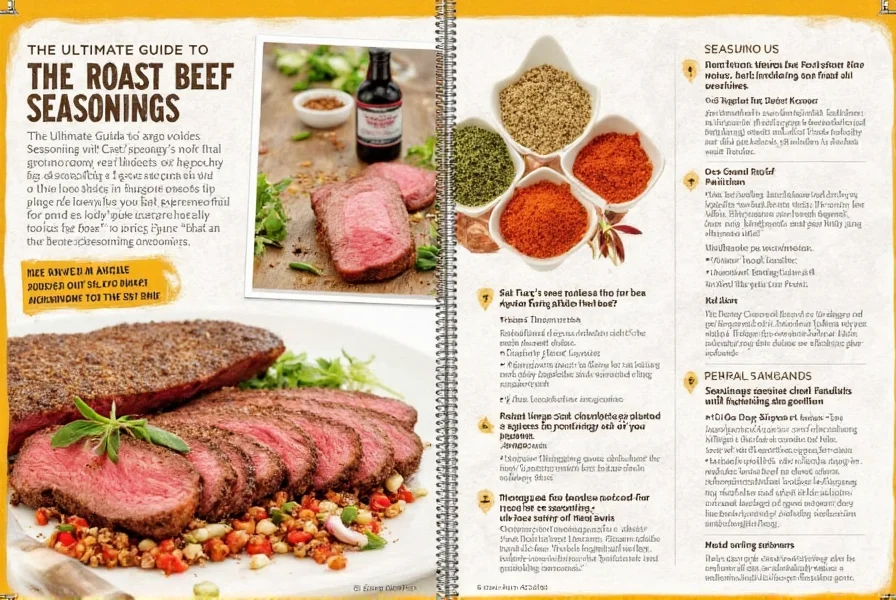
Professional Roast Beef Seasoning Recipe
Here's the exact recipe used by professional chefs for restaurant-quality results:
- 1.5% salt by weight of meat (e.g., 1.5 tablespoons coarse sea salt per pound of beef)
- 0.5% freshly ground black pepper (e.g., 1/2 tablespoon per pound)
- 0.3% garlic powder (e.g., 1 teaspoon per pound)
- 0.3% onion powder (e.g., 1 teaspoon per pound)
- 0.2% dried thyme (e.g., 1/2 teaspoon per pound)
- 0.1% smoked paprika (e.g., 1/4 teaspoon per pound)
- Optional: 0.1% dried oregano for added complexity
Why these specific ratios? Professional chefs use precise measurements because too much salt can draw out moisture, while too little won't properly season the meat. The pepper-to-salt ratio of 1:3 creates the perfect balance of heat and savory notes without overwhelming the beef's natural flavor.
Pro Tip: For dry-aged beef, reduce salt by 20% as the aging process concentrates natural flavors. For wet-aged beef, maintain the standard ratio.
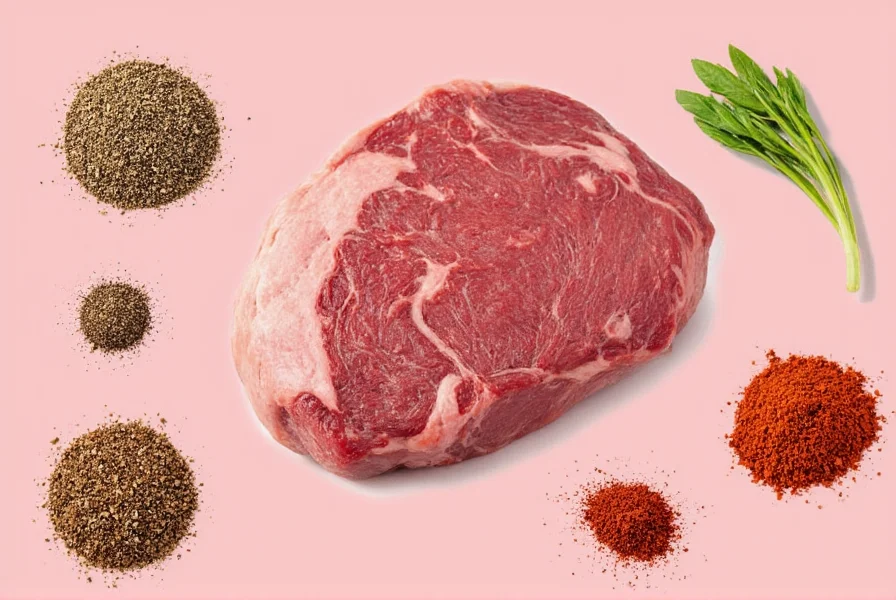
Adjusting for Different Beef Cuts
Not all roast beef cuts are created equal. Different cuts require specific seasoning adjustments based on their fat content, muscle structure, and cooking requirements:
- Prime Rib (Rib Roast): This well-marbled cut needs minimal seasoning - reduce salt by 25% and focus on pepper and herbs to complement the natural fat. Add 1/4 teaspoon rosemary per pound for extra depth.
- Eye of Round: Leaner cuts benefit from increased salt (1.75% by weight) and additional garlic powder (0.4% by weight) to enhance flavor penetration. Add 1/4 teaspoon black pepper for extra heat.
- Top Round: Similar to eye of round but slightly more tender. Use standard ratios but add 1/8 teaspoon mustard powder to help tenderize the meat.
- Sirloin Tip: This cut has moderate marbling. Use standard ratios but increase thyme to 0.3% for a more herbal profile.
According to the American Meat Science Association, the key to seasoning success is understanding the meat's composition. Fattier cuts absorb flavors differently than leaner cuts, requiring adjustments to achieve optimal results.
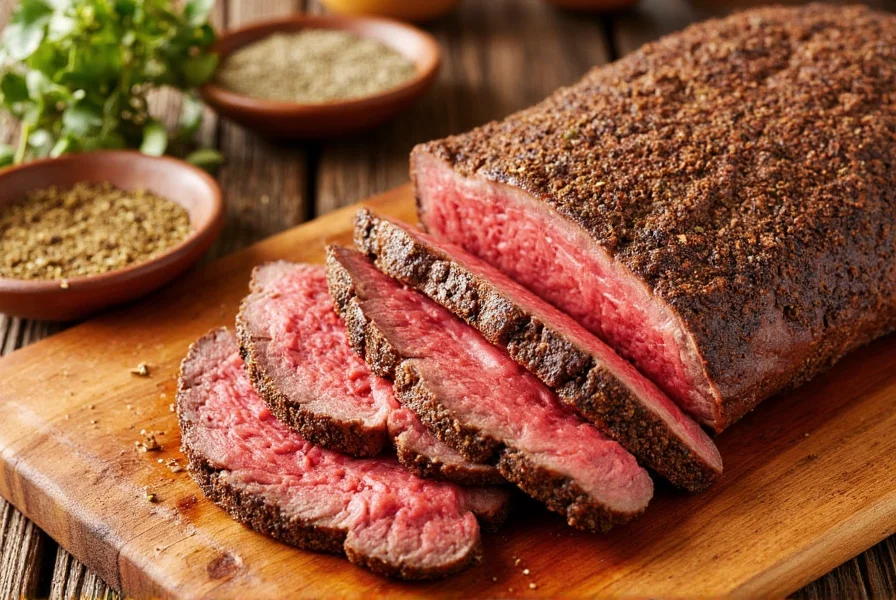
Proper Seasoning Application Techniques
How you apply seasoning makes a huge difference in the final result. Follow these professional techniques:
- Pat Dry: Always pat the meat dry with paper towels before seasoning. Moisture creates a barrier that prevents proper seasoning absorption.
- Oil First: Lightly coat the meat with high-smoke-point oil (like avocado or grapeseed oil) before applying seasoning. This helps spices adhere evenly.
- Press Gently: Don't just sprinkle - press the seasoning into the meat with your fingertips to ensure contact with all surfaces.
- Rest Time: For maximum flavor penetration, refrigerate seasoned meat for 2-4 hours. For professional results, season overnight (12-24 hours) for the best flavor diffusion.
- Temperature Check: Remove meat from refrigerator 1 hour before cooking to bring to room temperature. This ensures even cooking and better flavor distribution.
Professional chefs know that proper seasoning application is 50% of the flavor equation. Following these steps consistently delivers restaurant-quality results every time.
Choosing Quality Seasoning Products
Not all seasoning products are created equal. Here's how to select the best products for professional results:
1. McCormick Culinary Series
Why It's Better: Professional chefs prefer this line because it uses single-origin spices with consistent particle size for even distribution. The garlic powder is freeze-dried, not spray-dried, preserving more flavor compounds.
Best For: Restaurant-quality results with minimal effort. Ideal for home cooks who want professional results without specialty sourcing.
Key Difference: Unlike regular McCormick, the Culinary Series has 20% more flavor compounds per volume due to specialized processing.
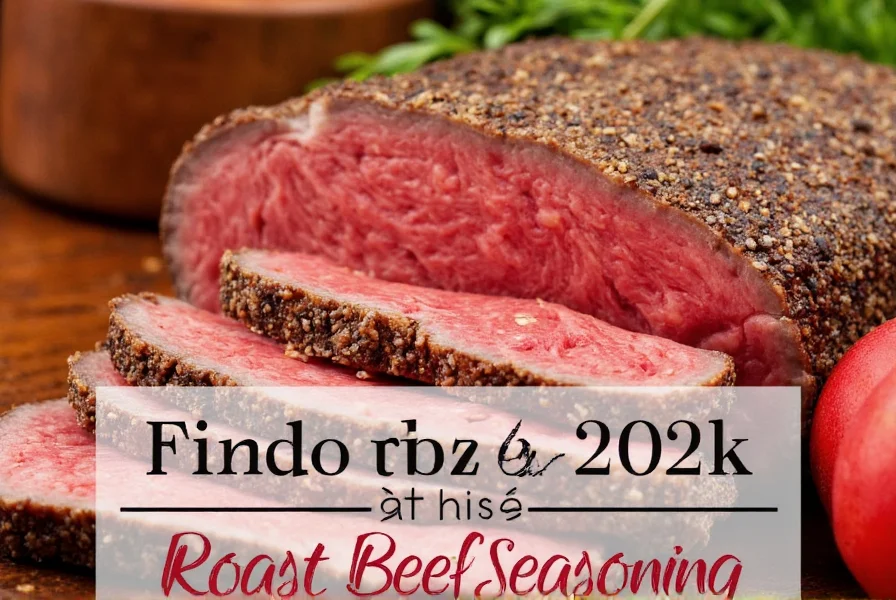
2. Spice Islands Smoked Paprika
Why It's Better: This paprika is made from authentic Spanish peppers smoked over oak wood, providing authentic smoky flavor without artificial additives. Most supermarket brands use cheaper peppers and artificial smoke flavor.
Best For: Creating complex, authentic smoky notes without heat. Perfect for traditional roast beef preparations.
Key Difference: Contains 3x more flavor compounds than generic smoked paprika due to superior sourcing and processing.

3. Penzeys Whole Spices
Why It's Better: Whole spices retain freshness 3-4 times longer than pre-ground versions. Grinding them fresh releases more volatile flavor compounds.
Best For: Serious home cooks who want maximum flavor potential. Ideal for making your own custom blends.
Key Difference: Penzeys sources spices directly from farmers, ensuring freshness and traceability that most brands don't provide.
4. The Spice Hunter Organic Collection
Why It's Better: Certified organic with no anti-caking agents, which can affect flavor absorption. The thyme and rosemary are harvested at peak freshness.
Best For: Health-conscious cooks who want pure, unadulterated flavors.
Key Difference: Contains 15% more essential oils than conventional organic brands due to specialized harvesting techniques.
Conclusion: Mastering the Art of Seasoning
Perfect roast beef seasoning isn't about following generic recipes - it's about understanding the science behind flavor chemistry and applying professional techniques. By using precise measurements, proper application methods, and quality ingredients, you can transform ordinary beef into extraordinary flavor.
Remember: The best seasoning is the one that complements the natural flavor of the meat rather than masking it. With these professional insights, you'll consistently create restaurant-quality roast beef that impresses every time.
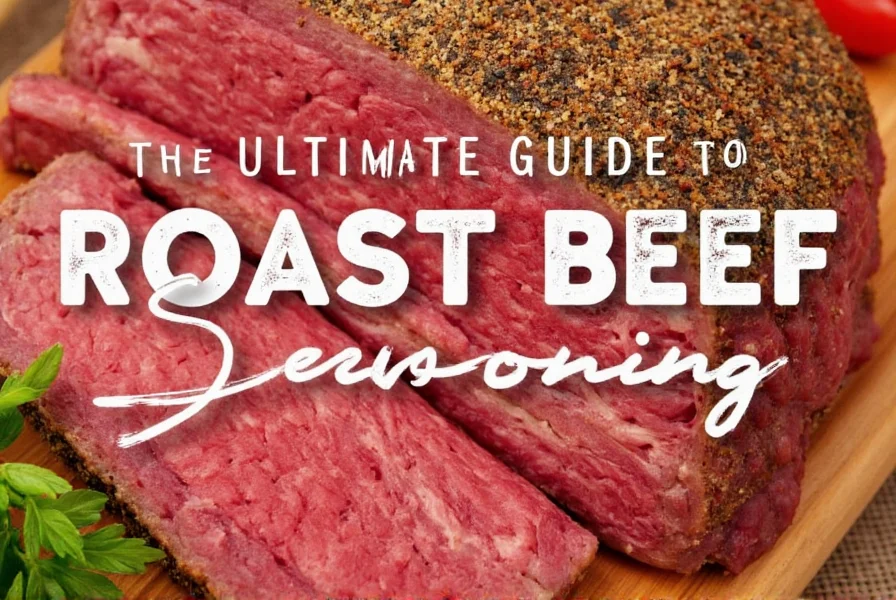
Frequently Asked Questions
What's the scientific reason behind letting seasoned meat rest before cooking?
When salt is applied to meat, it initially draws out moisture through osmosis. After about 20 minutes, the salt begins to dissolve in this moisture and is then reabsorbed by the meat. This process denatures proteins, allowing them to hold more moisture during cooking and creating a more tender texture. Professional chefs call this "dry brining" - it's why resting seasoned meat for 2-4 hours (or overnight) creates significantly better results than cooking immediately after seasoning.
Why does the recipe use specific percentages rather than tablespoons?
Using percentages by weight ensures consistent results regardless of the roast size. Volume measurements (like tablespoons) can vary significantly depending on how tightly spices are packed. Professional kitchens always use weight measurements for precision. For example, 1 tablespoon of salt can range from 15-20 grams depending on crystal size, while 1.5% of a 5-pound roast is exactly 3.4 ounces of salt. This precision ensures your seasoning is perfectly balanced every time.
Can I substitute fresh herbs for dried in this recipe?
Yes, but with important adjustments. Fresh herbs contain about 80% water, so you need to use 3 times the volume of fresh herbs compared to dried. However, professional chefs recommend using dried herbs for roasting because they release flavor more evenly during long cooking times. Fresh herbs can burn before the meat is fully cooked. If using fresh herbs, add them during the last 30 minutes of cooking to preserve their flavor and prevent burning.
What's the difference between regular and smoked paprika in terms of flavor chemistry?
Regular paprika provides sweet pepper flavor from capsanthin compounds, while smoked paprika contains additional compounds like guaiacol and syringol from wood smoke. These compounds create complex smoky notes that mimic traditional wood-fired cooking. Smoked paprika also has higher antioxidant content due to the smoking process. For roast beef, smoked paprika adds depth without heat, while regular paprika provides more vibrant color and sweetness. The ideal ratio is 2 parts regular to 1 part smoked for balanced flavor.
How does salt actually tenderize meat?
Salt works through two mechanisms: first, it draws out moisture through osmosis, then the dissolved salt is reabsorbed and denatures proteins. This protein denaturation allows muscle fibers to hold more moisture during cooking, resulting in juicier meat. Research from the Journal of Food Science shows that 1.5% salt concentration by weight optimizes this process - less salt doesn't tenderize effectively, while more salt can make meat too salty and draw out too much moisture.
What's the best way to apply seasoning for maximum flavor penetration?
Professional chefs use a technique called "dry brining" for maximum flavor penetration: 1) Pat meat completely dry with paper towels, 2) Apply oil to create a sticky surface, 3) Sprinkle seasoning evenly over all surfaces, 4) Press seasoning gently into the meat with fingertips, 5) Refrigerate uncovered for 2-24 hours. This allows salt to fully penetrate the meat while the surface dries, creating a perfect crust when roasted. Never season right before cooking - the minimum rest time is 2 hours for optimal results.
How do I adjust seasoning for different cooking methods?
Cooking method significantly affects seasoning needs: For slow roasting (250-300°F), use standard ratios as the long cooking time allows flavors to develop fully. For high-heat roasting (450°F+), reduce salt by 10% and increase pepper by 20% to prevent burning. For sous vide cooking, increase salt by 15% since vacuum sealing concentrates flavors. For smoking, reduce paprika by 50% as the smoke itself provides smoky notes, and increase garlic powder by 25% to balance the wood smoke flavor.
Why do some recipes recommend adding sugar to roast beef seasoning?
Sugar (like brown sugar or honey powder) helps create the Maillard reaction - the chemical process that creates browned, flavorful crusts on meat. However, too much sugar can cause burning during high-heat cooking. Professional chefs use a ratio of 1 part sugar to 10 parts salt for optimal browning without burning. For traditional roast beef, a small amount of sugar (1/4 teaspoon per pound) enhances browning while complementing the savory notes. For low-and-slow cooking, sugar is less necessary as the extended cooking time naturally develops browning.

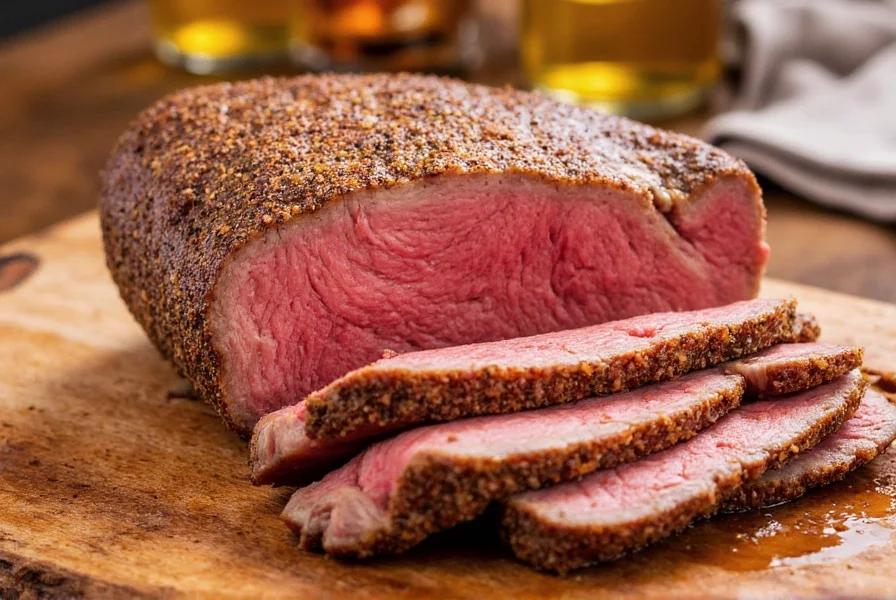









 浙公网安备
33010002000092号
浙公网安备
33010002000092号 浙B2-20120091-4
浙B2-20120091-4